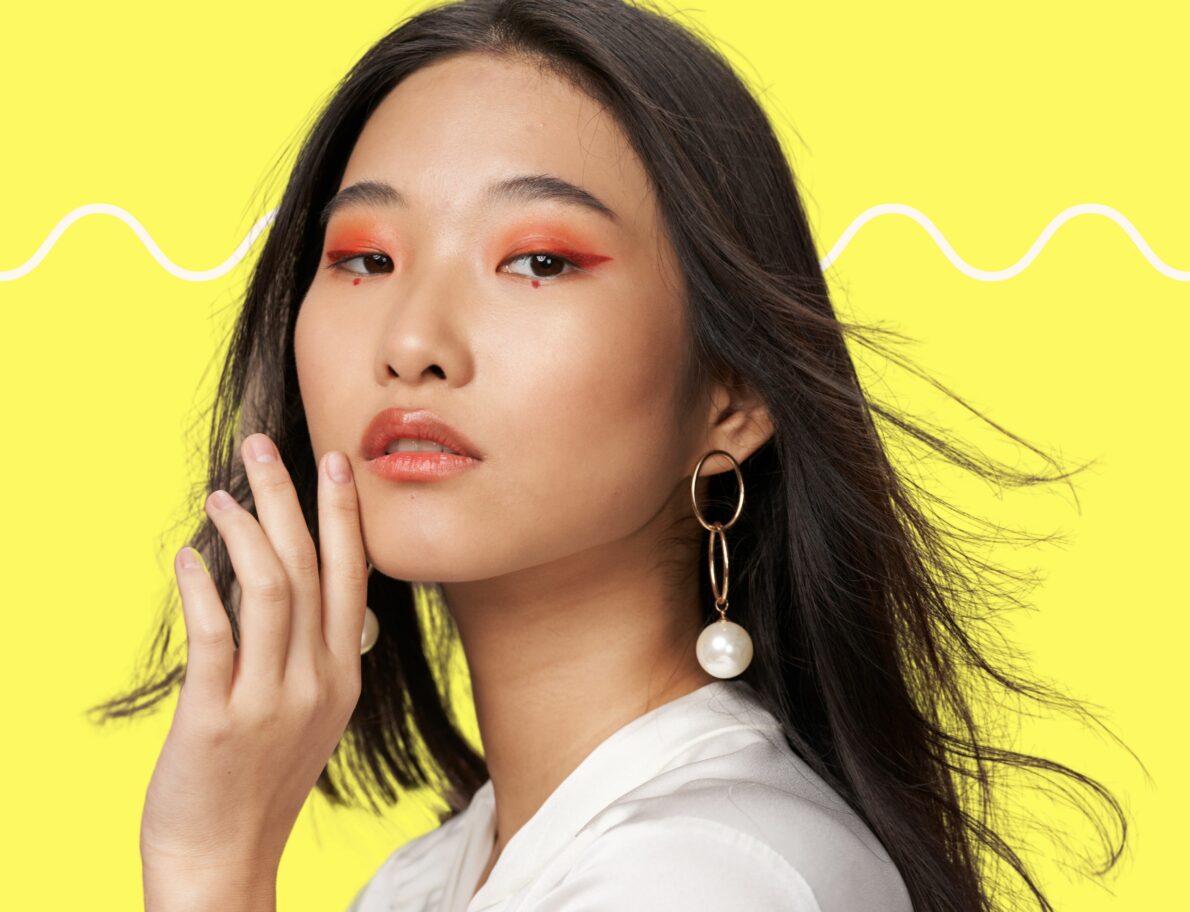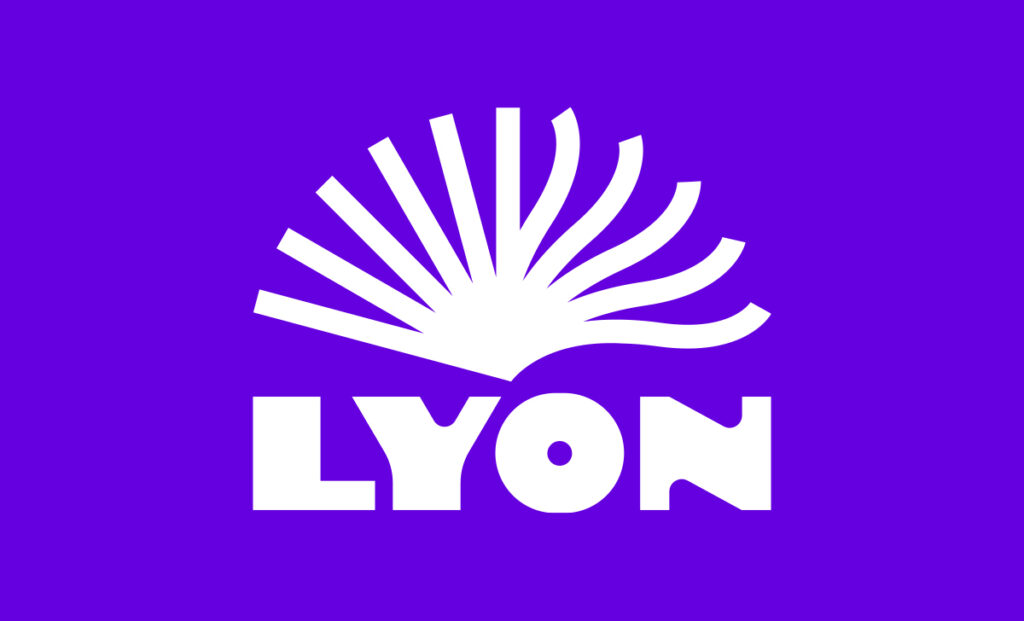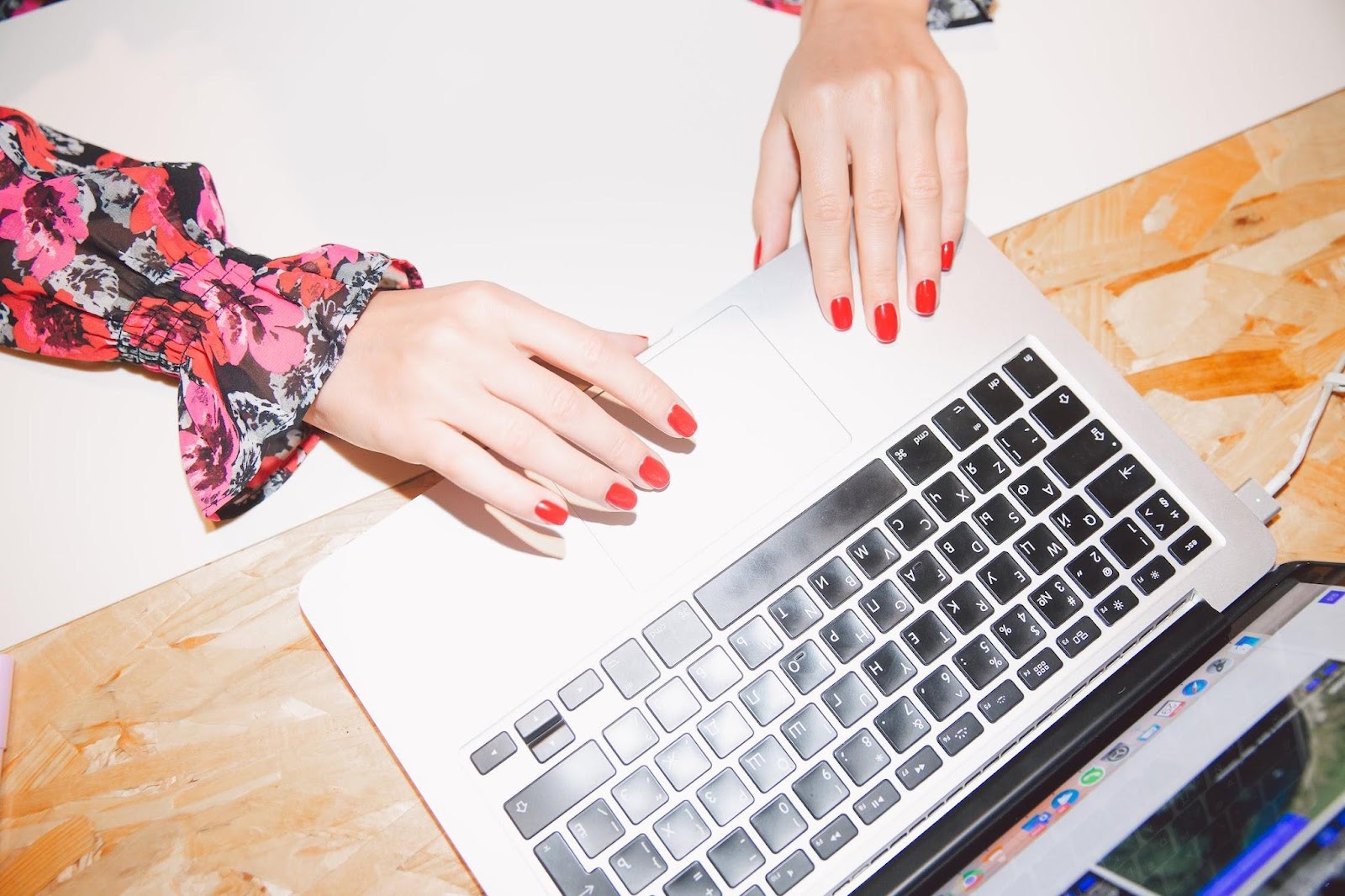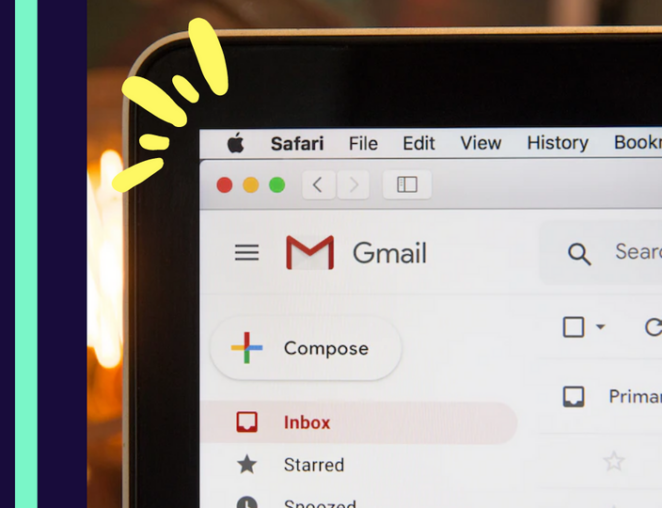What you’ll learn
It’s wild how much beauty industry trends can change in just one year, isn’t it?
One quick look through Vogue’s newsletters, and you might get a taste of what’s shifting—but as a beauty brand in 2024? You have to dig deeper than a few marketing emails and Google searches to keep up with the latest news in beauty. Why? Because that’s how you stay relevant and connected to your target audience.
No matter how slammin’ your content game is, all beauty companies (skincare, beauty, wellness, and health, from startups to mega-brands), need audience insights, market research, and up-to-date knowledge of beauty industry news to bolster their strategy.
When you do that, you’ll create beautifully tailored content that seamlessly aligns with your audience’s desires. The payoff? More brand loyalty, record sales, and a ride-or-die fanbase. 🥳
At Lyon Content, we specialize in helping beauty businesses thrive in the ever-evolving marketing jungle. Through our expertise, we’ve empowered beauty brands and ecommerce stores just like yours to slay their niche with relevant, timely beauty content that’s perfectly on trend.
We tapped into the mind of our pack leader, Christina Lyon, and together, went down the rabbit hole to present the latest trends, changes, and strategies to keep your beauty biz (and content) sharper and savvier than ever in 2024.Ready to dive in? Let’s start with the trends shaking up the beauty industry right now.
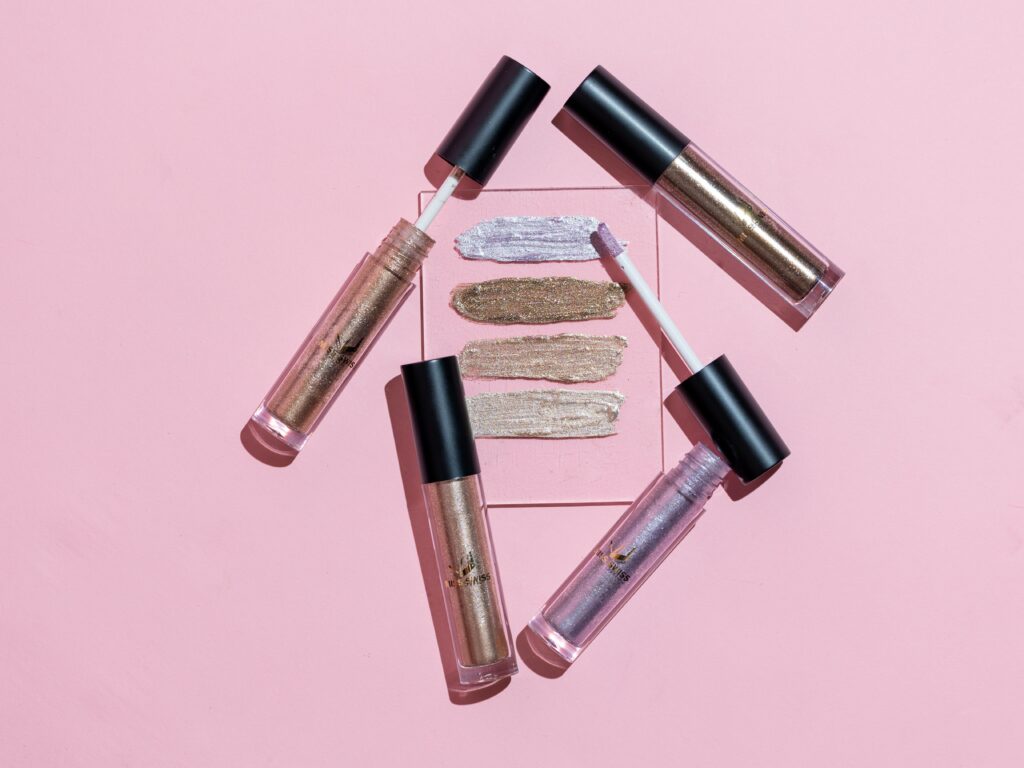
What are the beauty trends in 2024?
Despite a looming recession, beauty e-commerce trends and forecasts point toward more mission-driven campaigns and personalized content. This means brands need to get savvy with their marketing budgets and shift the focus from selling to participating in the narratives and discussions relevant to their audience.
What is in demand in the beauty industry? Transparency, authenticity, and humanity. Whether you sell personal care products, luxury cosmetics, wellness tech, beauty, or skincare products, you’ll need to take a proactive, methodical approach to stay on your audience’s radar.
Keep reading as we spill the deets for what’s on the horizon.
1. Hyper-personalized products and content are the standard
In 2023, beauty shoppers made it known that they wanted more personalization in the buying journey. Fast-forward to 2024, and they’ve doubled down on that wish. Over 75% of beauty lovers prefer personalized shopping experiences and are willing to pay a premium for them.
According to Christina, the kick-off to nailing personalized marketing is audience research. She says brands have to be a fly on the wall of their audience, as well as their competitors’. Her go-to troves for audience insights?
“Look for the evolving narratives discussed on social platforms like TikTok and Instagram, as well as forums like Quora and Reddit.”
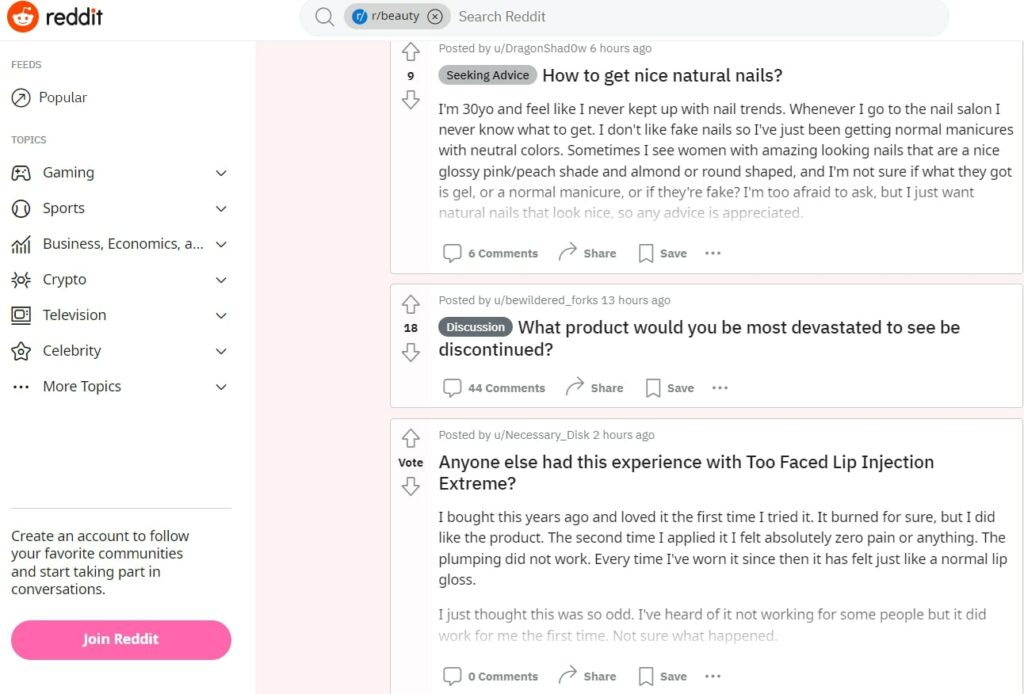
“Spot patterns in consumer feedback, preferences, and opportunities for how to use this insight to inform your content strategy,” says Christina.
Peep the above example. Searching beauty threads on Reddit gives you backstage access to the popular, relevant discussions your audiences are having. One of the trending topics? The struggle to get nice natural nails.
Now imagine you’re an ecommerce nail brand. You could harness these insights to:
- Craft a how-to blog post for nice, natural nails
- Repurpose that article into bite-sized social media posts (hello, tutorials)
- Start a newsletter series all about caring for natural nails
Voila! You just created a whole batch of original, relatable content personalized to your target audience.
While some brands might just apply market research to generate audience insights, you’re busy tapping into the richest resource at your disposal: your customers.
In 2024, though, customers expect beauty brands to go the extra mile. One driving force behind hyper-personalized beauty experiences? AI.
2. Beauty and tech are coming together
The robots are here, and they’re giving beauty shopping a futuristic AF upgrade.
With the rise of artificial intelligence (AI) and virtual reality (VR), personalized beauty has taken on a whole new meaning.
Now that one-size-fits-all beauty is out, customized solutions are taking center stage. More brands than ever are turning to technology to fuel this evolution.
Using AI/VR for hyper-personalized shopping experiences
When it comes to shopping online, what is the biggest problem for the beauty industry? Many consumers feel it’s finding their perfect foundation shade.
Picture this common scenario—you’re perusing your favorite beauty brand’s new foundation collection, unsure which shade to buy. The try-on photos and swatches just aren’t doing the trick.
All too often, consumers would guess and buy a foundation shade that didn’t match their skin tone. Savvy beauty brands took note of this problem. When AI burst onto the scene, they saw an opportunity to leverage the game-changing tech to solve it.
Enter one of the techiest beauty ecommerce trends: AI shade match tools.
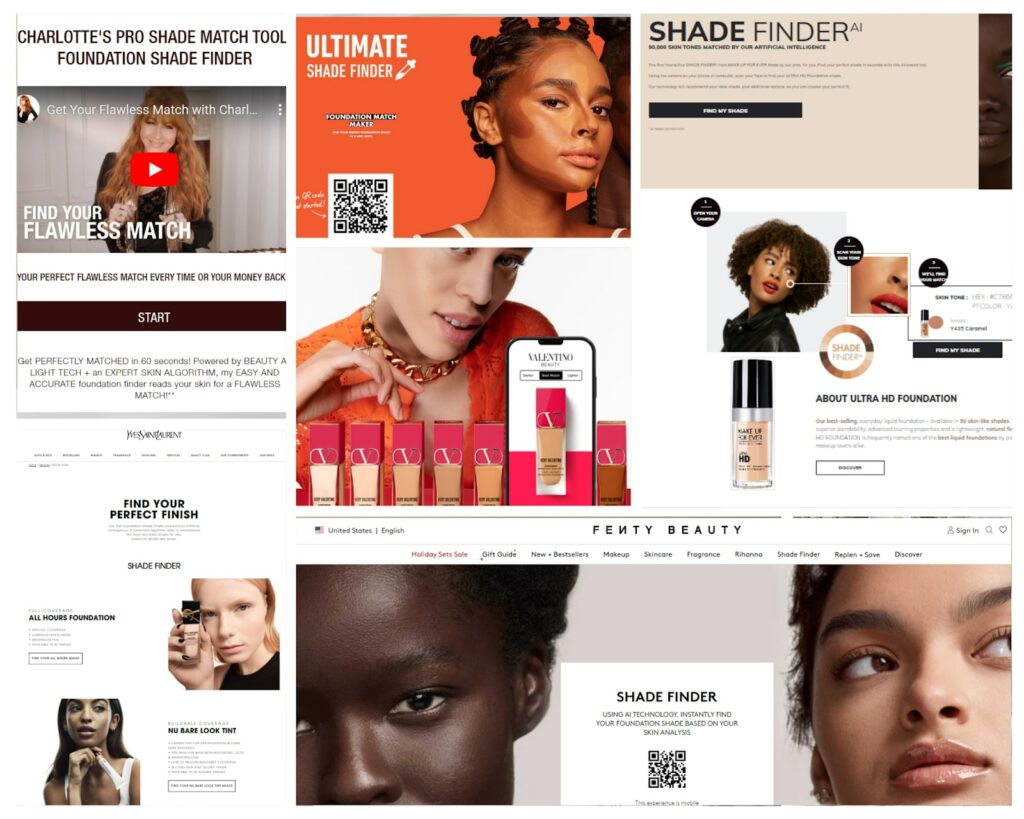
Oh, and virtual makeup try-ons? They did that, too.
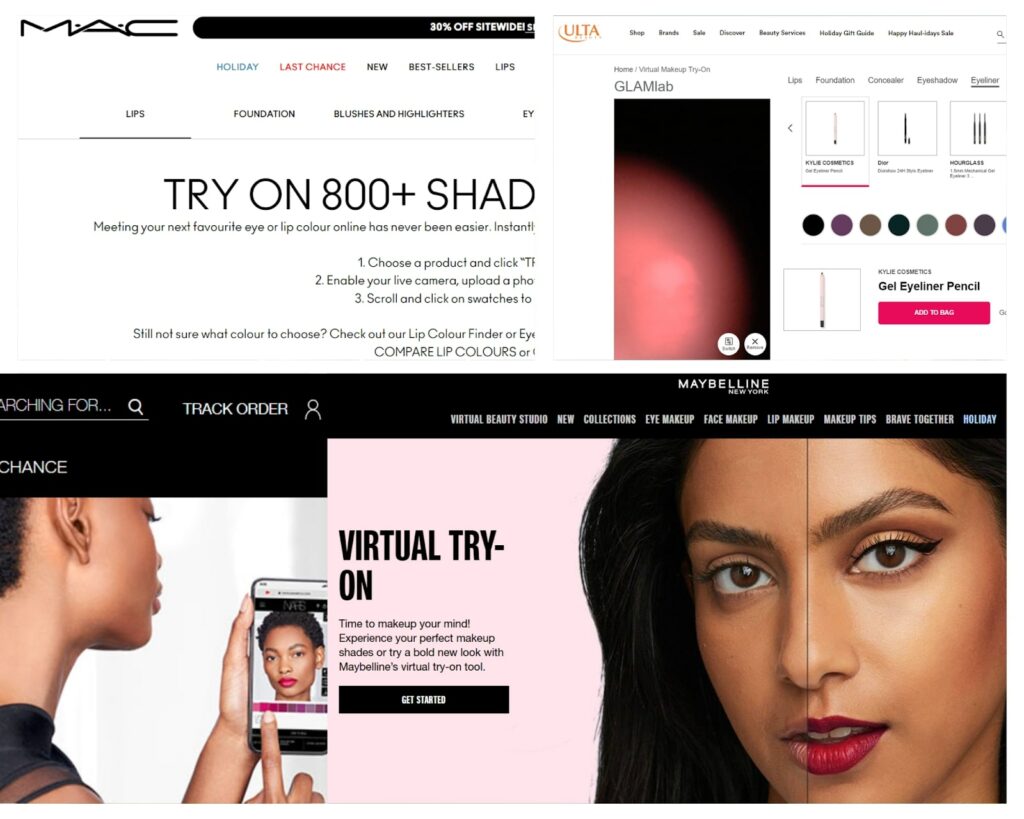
And guess what? These strategies worked. Nars alone saw a 300% boost in conversions thanks to their AI/VR beauty tools.
Christina chimes in:
“AI is only going to continue to evolve and do so quickly. Brands really need to embrace tech and AI to offer their customers the most enjoyable user experience. Use AI to make it easy to see their products in action, with virtual try-ons, tone matching, etc, all on your product page. Leveraging AI gives you an advantage because you can create a holistic experience, and when you do that, they won’t bounce and look elsewhere.”
Hyper-personalization x futuristic tech? Check. But what is the biggest trend in the beauty industry doing for the backend of your beauty biz?
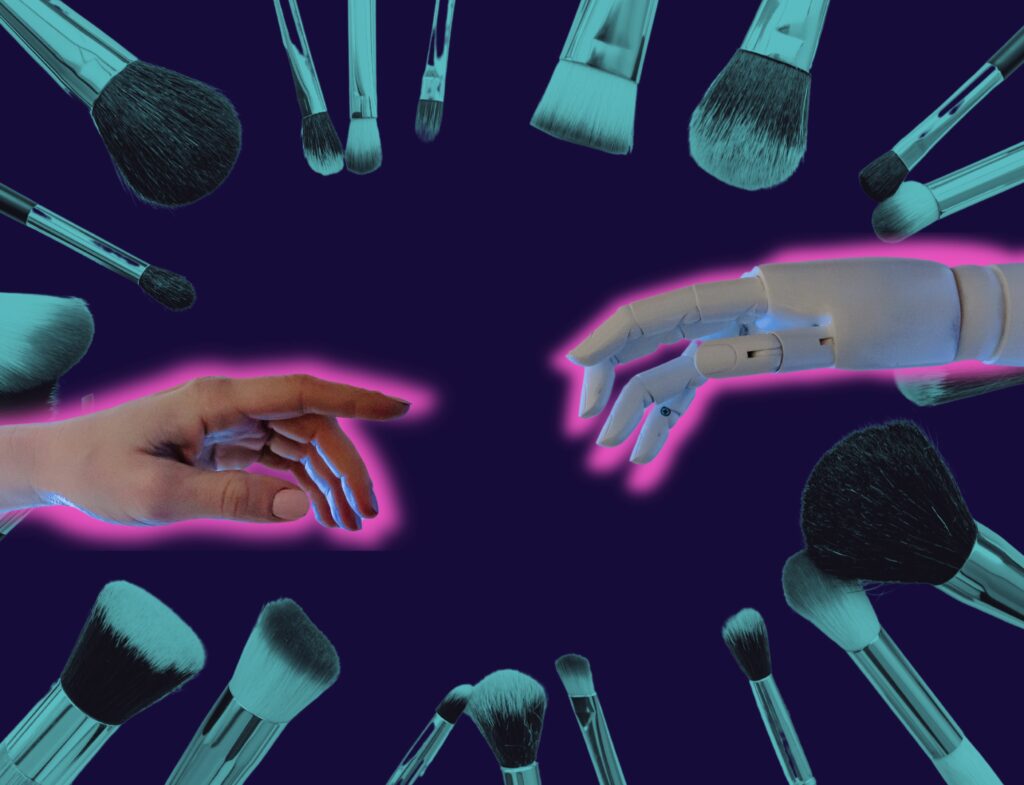
Using AI to streamline beauty marketing
Virtual try-ons and AI shade matching are just the beginning…
As AI continues to evolve, some brands (like L’Oréal, Ciaté London, and I Am Proud) are leveraging generative AI to streamline their marketing processes.
And no—we don’t mean they’re using ChatGPT to whip up beauty articles. Think bigger.
These brands are forming symbiotic relationships with generative AI, using it for:
- Research and development
- Competitive and market analyses
- Production ideation
- Ingredient insights and profiling
- Concepting creative campaigns
- Graphics design and creation
- Planning and budgeting
- Enhancing customer service (e.g., chatbots, apps, or voice-enabled devices)
- Image and photo analyses
Sounds pretty cutting-edge—doesn’t it?
But as with all tech, generative AI has its limitations.
For one, it has a learning curve. Nora Zukauskaite, the Global Marketing Director at Brand Agency London (Ciaté), says it takes extensive experimentation and fine-tuning to get the best results.
Then there’s the question of ethics.
AI bias? Yeah, it’s a real thing. It all depends on who builds them, how they’re developed, and how they’re ultimately used. Other gray areas bring to question concerns of intellectual property, copyright infringement, contract, and privacy laws.
While we see great strides with AI in shaping the beauty buying experience, we’d still suggest a careful approach to using it on the backend. Or, at the very least, maintain extensive human oversight.
What is the future of the beauty industry? AI-human hybrid marketing, perhaps? We’ll have to wait and see. 🤖
Curious about how social media is changing the beauty industry?
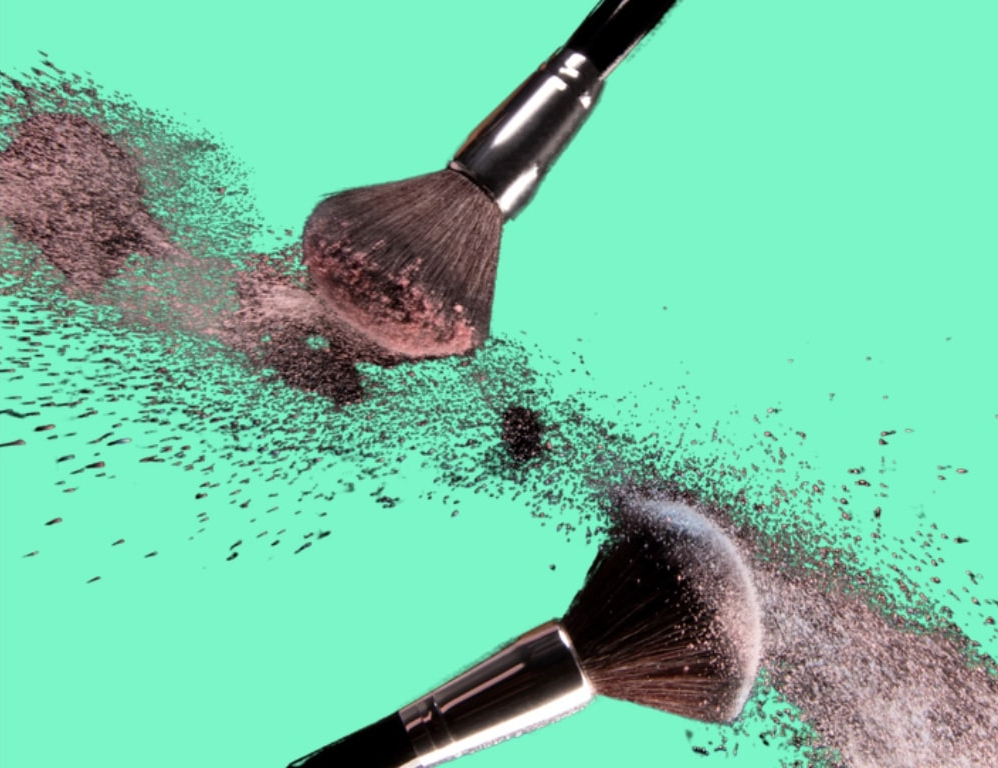
3. E-commerce and social selling continue to lead the charge
Audiences don’t want to leave their sofa when they have an entire beauty buffet in the palm of their hand. We can probably thank post-pandemic life for that.
In 2024, that trend shows no signs of slowing down. Last year alone, the beauty and cosmetics industry in the U.S. raked in about $86 billion in e-commerce revenue. That’s a stark contrast to 2022’s $18.60 billion. 😯
The kicker? It’s only expected to go up from there.
While beauty enthusiasts love online shopping, there’s one avenue that’s bringing in more sales and brand engagement than ever before: social media.
By 2024, your everyday scroller will spend $800 on social commerce each year. And beauty products? They’re one of the top buys (second only to apparel).
When it comes to beauty brands and consumers, two popular social media channels continue to reign supreme: TikTok and Instagram.
More beauty shoppers are turning to social commerce than ever. And brands that took note early on are reaping the rewards. One brand riding the TikTok wave all the way to the bank? Truly Beauty:
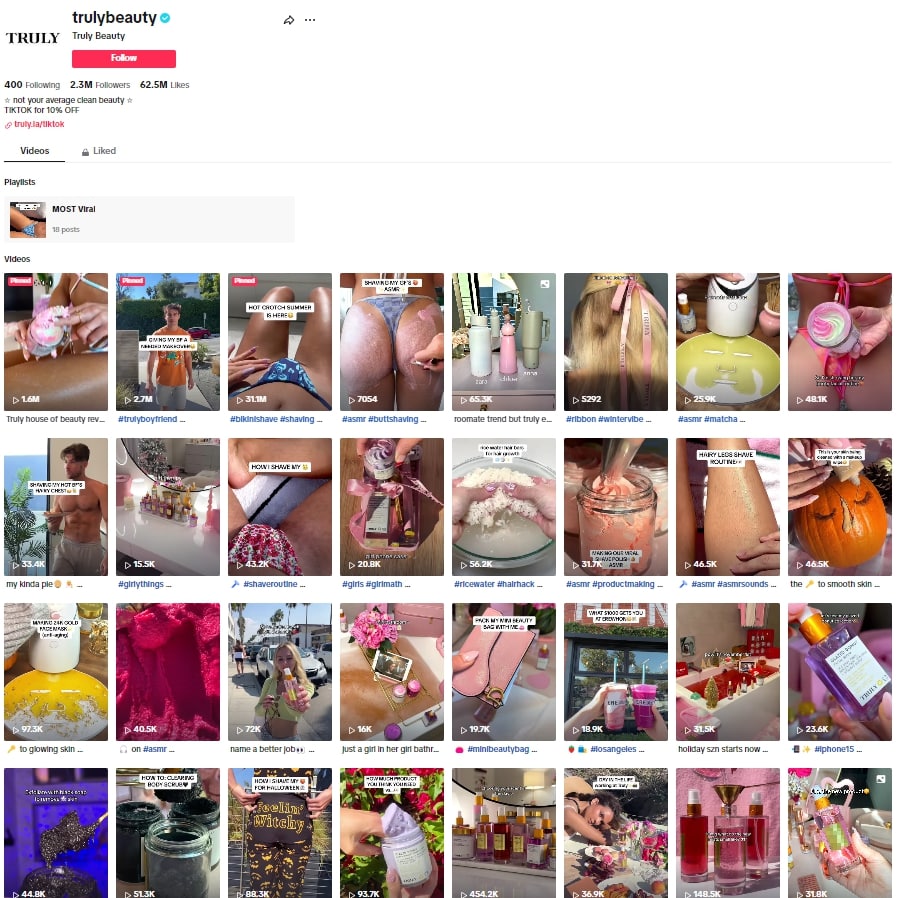
The company’s head of social media, Zara Brillo, says user-generated content (UGC) is one of the driving strategies behind their explosive TikTok growth. That and talking about things other beauty brands shy away from, like butt acne and ingrown hairs.
Not only is this a testament to the power of social selling in the years to come, but it shows what else is in demand in the beauty industry: authenticity. One way brands are delivering it? Bringing back influencers.
Influencers are on the comeback
Raise your hand if you remember the golden age of beauty gurus.🙋🏻♀️
There was a time when you couldn’t open YouTube without coming across one of Jaclyn Hill’s makeup tutorials or Jeffree Star’s iconic product reviews. But as the nature of social media changed, the YouTube beauty community decline came swiftly.
The influencer era shifted from beauty and skincare to focusing heavily on lifestyle and apparel. But thanks to social media (particularly TikTok), beauty influencers are making a big comeback.
Sure, wining and dining your audience with honest messaging, product value, and performance is a must. But nothing beats social proof, and that’s precisely where influencers prevail.
Why? Your consumers are more discerning than ever. To them, authenticity matters most (more on this in a bit). And influencers tend to feel much more authentic and relatable than out-of-reach celebs endorsing beauty brands.
Beauty Influencing in Action
Juice Beauty does a stellar job promoting their Vitamin C Serum with their affiliate partner @beautybymathu.
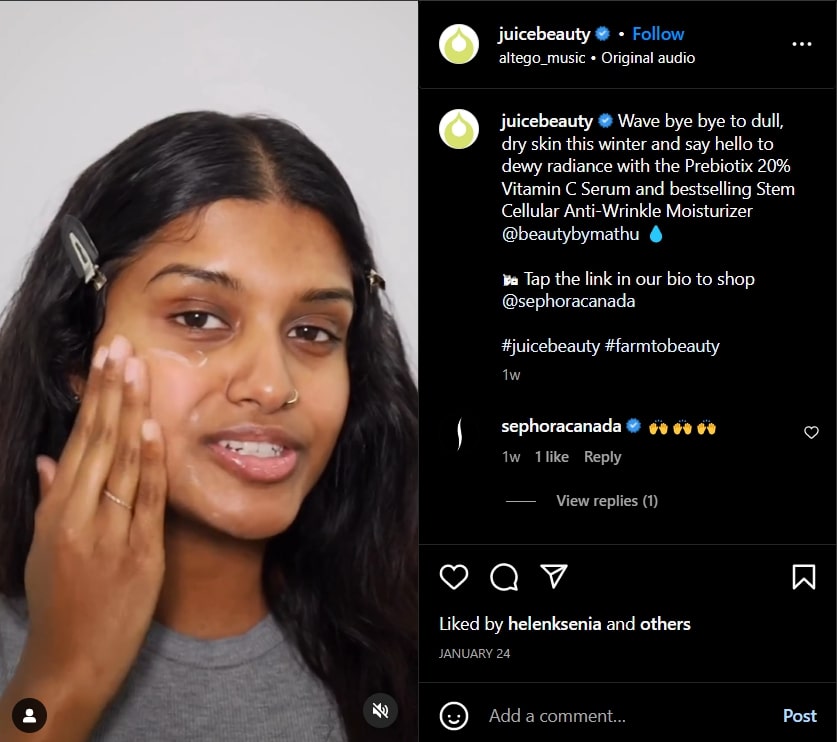
Mathusha Thurairajasingam is a Tamil-Canadian beauty influencer and finance student from Montreal, Quebec. She has 226K Instagram followers and 75K on TikTok.
Her skin isn’t airbrushed or filtered. She talks like a real person because she is a real person. She demonstrates the product well and helps Juice Beauty’s audience imagine themselves using it, too.
Why does this work? She’s a lot like the 20- to 30-somethings shopping for Juice Beauty’s products—so they trust her opinion.
We see this from the 67% of beauty customers who use influencer reviews to shop for new products.
That said, you have to meet your audience where they are.
“I provide more upscale aesthetic services and sell luxury skincare products from suppliers,” says Kerri Ryan, founder of Brow N Beauty. “My audience is older women, often higher-income. They’re not on TikTok; they’re on Facebook.”
And don’t forget to target local customers, too, especially if you’re a brick-and-mortar beauty brand like Kerri’s.
“I also put serious emphasis on my in-person experience because many of my clients come from local referrals in our community,” Kerri continues, “The treatments speak for themselves through referrals, so it’s a knock-on marketing effect when a customer is happy.”
Another point for authenticity?
4. Be transparent about product pricing and costs
In recent years, there’s been a growing demand for cost transparency in the beauty industry. With inflation reaching its peak, this is more prominent than ever.
According to Christina, disclosing your costs and the reason for your price points is a great way to be honest and build trust with your audience.
“The worst thing to do is come across as tone-deaf about massive inflation and the threat of recession.”
Yeah, luxury beauty brands, we’re looking at you, too. Inflation’s a b*itch (we’ll get to that later), and even your higher-income customers are feeling the effects of excessive costs.
Information gatekeeping in 2024? Not if you want to rise above the noise.
Isla Beauty is a brand that’s putting this philosophy into action:
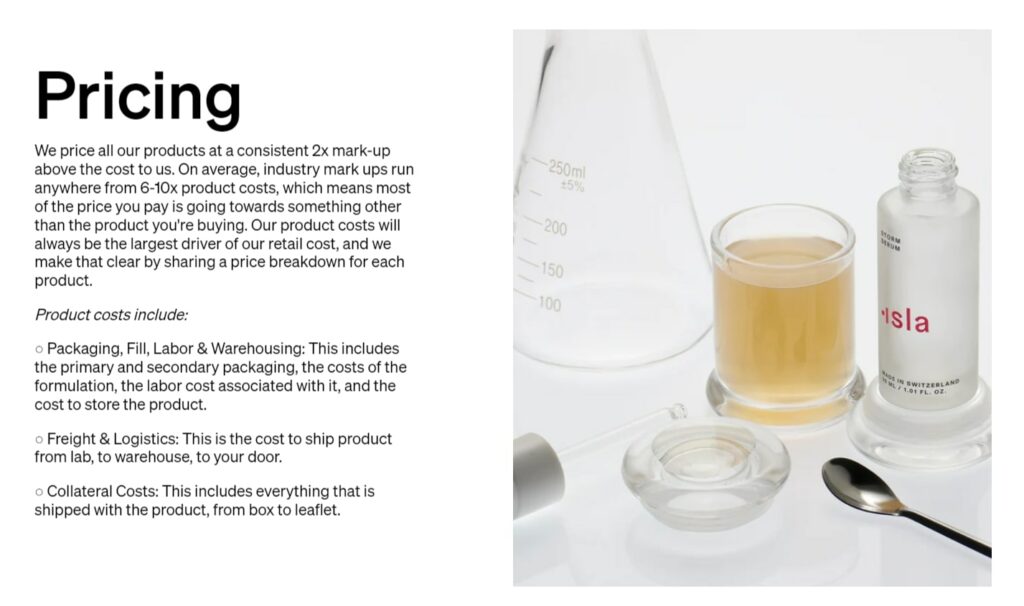
Not only are they keeping it real AF with their audience, but they’re making transparency their edge. We support a candid beauty brand.
Other ways to deliver price transparency? You could craft a blog post about why your services cost what they do or a comparison between your offerings and your competitors’.
But wait—isn’t it a faux pas to discuss business with clients? Not these days. Your customers want assurance that they’re spending their money wisely.
“If you’re an affordable beauty brand, it’s vital to be transparent about pricing, offer discounts and referral programs, and open more channels for easy access to your products,” says Christina. Don’t think of it as being vulnerable—think of it as being transparent.
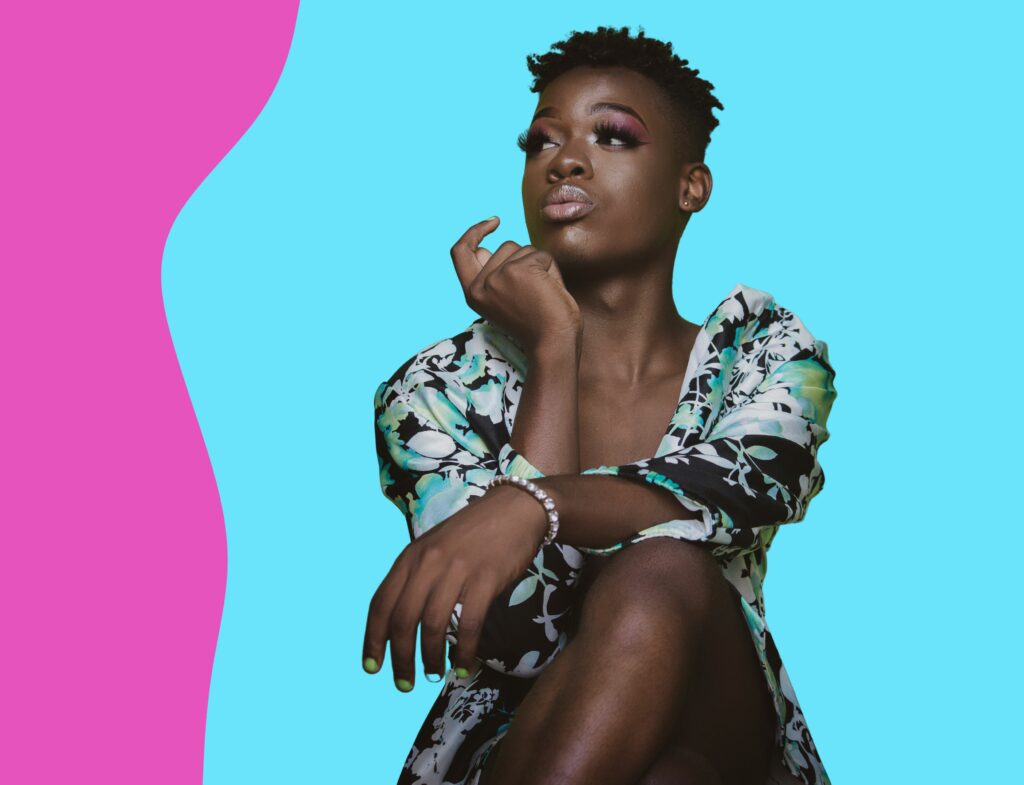
5. Relatable marketing is here to stay—even for luxe brands
Is the beauty industry oversaturated? Sure, you’ve got competition, but we like to think there’s room for everyone. One way to stand out in 2024? Make relatability a cornerstone of your branding.
But can luxury products worth thousands of dollars actually feel relatable to the average consumer? Heck yes.
“If you’re in luxury beauty, you could pivot your brand messaging by partnering with real customers to create user-generated content that helps humanize your brand and make it more accessible and relatable,” says Christina.
Take our client, Daniel Alain, for example.
How Daniel Alain uses influencer marketing to relate to customers
A 30-year industry veteran in the luxury hair care world, Daniel Alain creates the world’s finest, 100% human hair wigs and innovative alternative hair products.
Every solution is backed by clinical trials, peer reviews, world-class materials and craftsmanship, and glowing testimonials. Still, it’s a tall order to showcase why their wigs are worth thousands of dollars, especially compared to other budget-friendly alternatives on the market.
The solution?“With their #sHAIRyourjourney campaign, they pivoted their marketing strategy by turning their real wig customers into storytellers and evangelists of their brand message,” says Christina. “They rolled out a whole influencer campaign of micro-influencers and real customers to make their brand more accessible and understanding to the struggle women with hair loss face.”
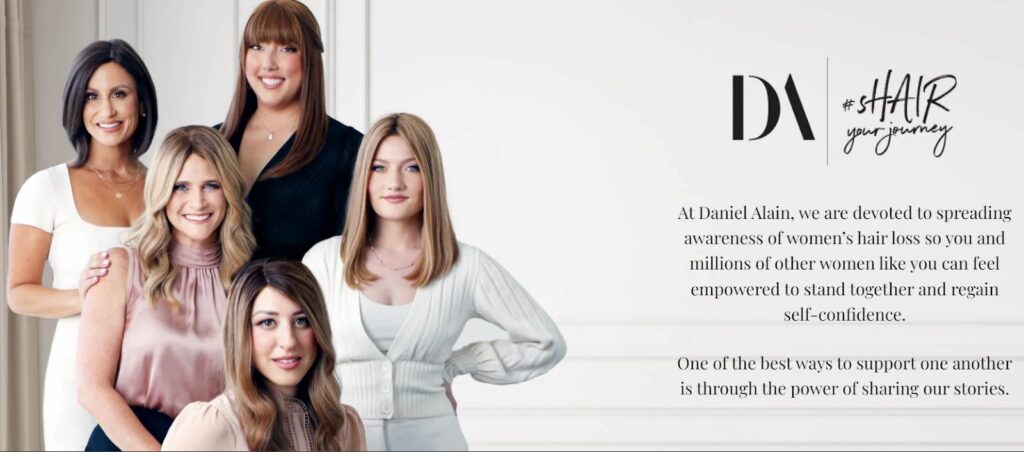
For example, Jen (@being_ms._brown) has alopecia and regularly wears Daniel Alain’s wigs. She’s also a lifestyle influencer and mom who posts everyday content about her struggles with alopecia. Hello, reliability.
She’s an ideal spokesperson for the brand because she knows their customers’ pain points first-hand—because she’s a customer herself. You can see how this makes the luxury brand much more accessible to all levels of consumers.

Let’s not forget the power of value-packed content.
6. Offer more value and helpful content
“Many indie beauty brands don’t have the marketing budget to compete with the big dogs as far as organic and paid search campaigns go,” says Christina. “To leap ahead of the competition, they’ll need to harness the power of social campaigns. TikTok lends itself fabulously to humanized, authentic content.”
So do YouTube and podcasts. Imagine a juicy Q&A series with higher-ups in your company, industry experts, or real customers sharing experiences with products. Christina sees this as a fabulous way to build your brand awareness, boost your credibility, and bolster trust with your audience.
Check out this expansive, industry-wide podcast series “The Beauty Of…” from Ulta Beauty:
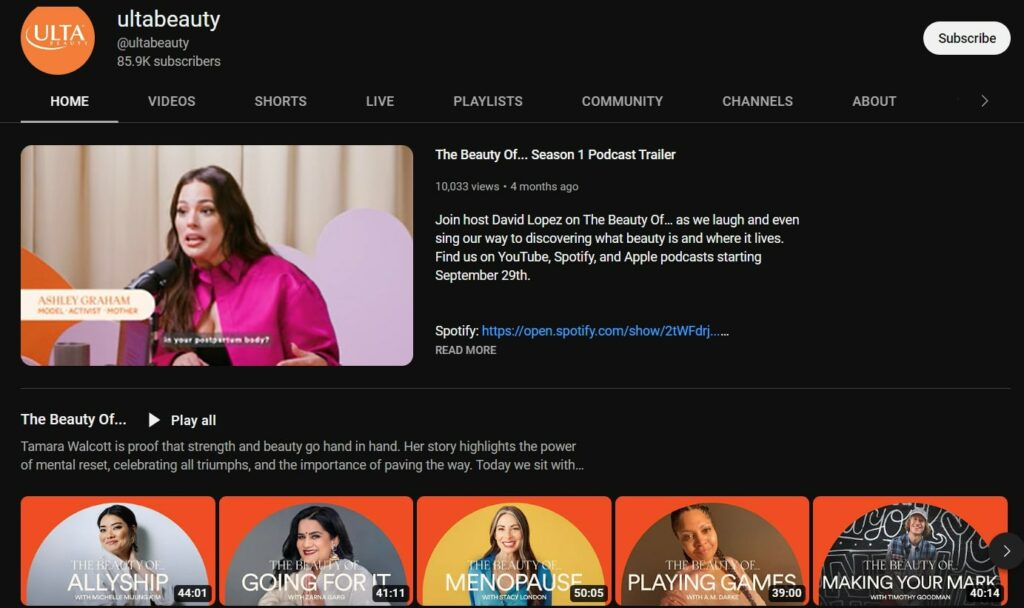
Then, you have people searching for beauty hacks and tips online. Enthrall them with a free, value-packed content library or learning center (hello, beauty blog).
“I see video really taking off but don’t count out blogs just yet either. They’re tremendous resources for educating your audience. Blogs with accompanying videos that visualize the topics discussed will do the best since they’re packaging the info into two unique mediums for diverse audiences.” says Christina.
But we won’t sugar-coat it—creating high-performing blog content on the reg requires expertise and consistency. If you feel overwhelmed, we’re happy to help with our top-notch beauty blog writing services. 😉
Drunk Elephant’s Drunk Mag is another sweet source of inspo for blog ideas and beauty tips:
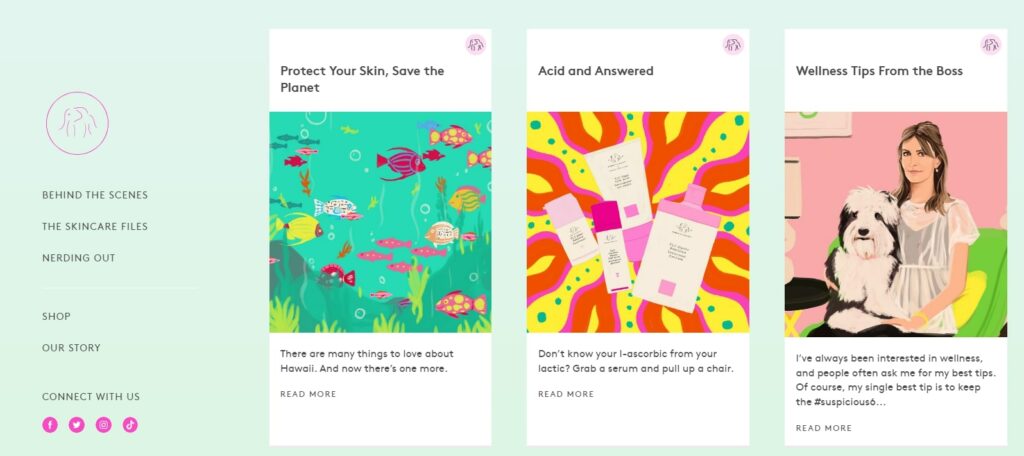
Authenticity and value also shine through your written content — but not if it’s littered with regurgitated AI.
7. Prioritize human-written copy
With ChatGPT going viral last year, the marketing world is flooding with soulless AI-generated copy to save on operating costs. But beauty brands may be collateral damage, seeing tanked Google rankings and audience distrust.
“AI is a threat to the exceptional content quality beauty brands need to uphold if they want to remain unique and trustworthy to their audiences,” says Christina.
Your customers demand authenticity and will quickly notice if they think they’re talking to a robot. If your internal team can’t handle your content calendar, it’s best to hire a pro.
“We’re fleshing out the human elements of our content that AI will never hold a candle to,” says Christina. “This means scheduling more interviews with our clients to infuse authority and actionable quotes and insights into the content, ensuring each piece has rock-solid SEO, and meaty research. Beauty brands who respect this caliber of authenticity will experience greater brand loyalty through this turbulent economic landscape.”
Don’t get us wrong; we aren’t totally denigrating generative AI. As we discussed earlier, it has some amazing capabilities. However, its limitations (especially when it comes to writing) cannot be underscored enough.
Trust us—we’ve tested the most popular AI checkers for accuracy. Spoiler alert: they don’t quite hold up.
And in an era where authenticity prevails, you want the one-of-a-kind magic only a human writer can bring.
7. Advocate for beauty diversity, inclusivity, and equality
Remember the ’90s beauty ads that only featured one audience persona: the skinny white lady. Or how about Victoria’s Secret’s not-so-body-positive ‘Perfect Body’ campaign from 2014?
No shade to the gorgeous Kate Mosses and Heidi Klums of the world, but those days of only representing one body type are long gone (thankfully). Today, the tide has shifted.
Brands like Victoria’s Secret feature models of all ethnicities, shapes, sizes, and backgrounds, while brands like Sephora have made it a point to highlight Black-owned brands.
So, where’s your beauty brand at with diversity and inclusivity?

More than ever, consumers want to see themselves reflected in their favorite brands. In fact, 42% say they’re more likely to buy a product based on the brand’s commitment to diversity and inclusivity. That means they want a rainbow of races, genders, ages, sexual preferences, and more.
Our client embody beautifully embodies all skin types, and their web and blog visuals are wonderfully inclusive and diverse:
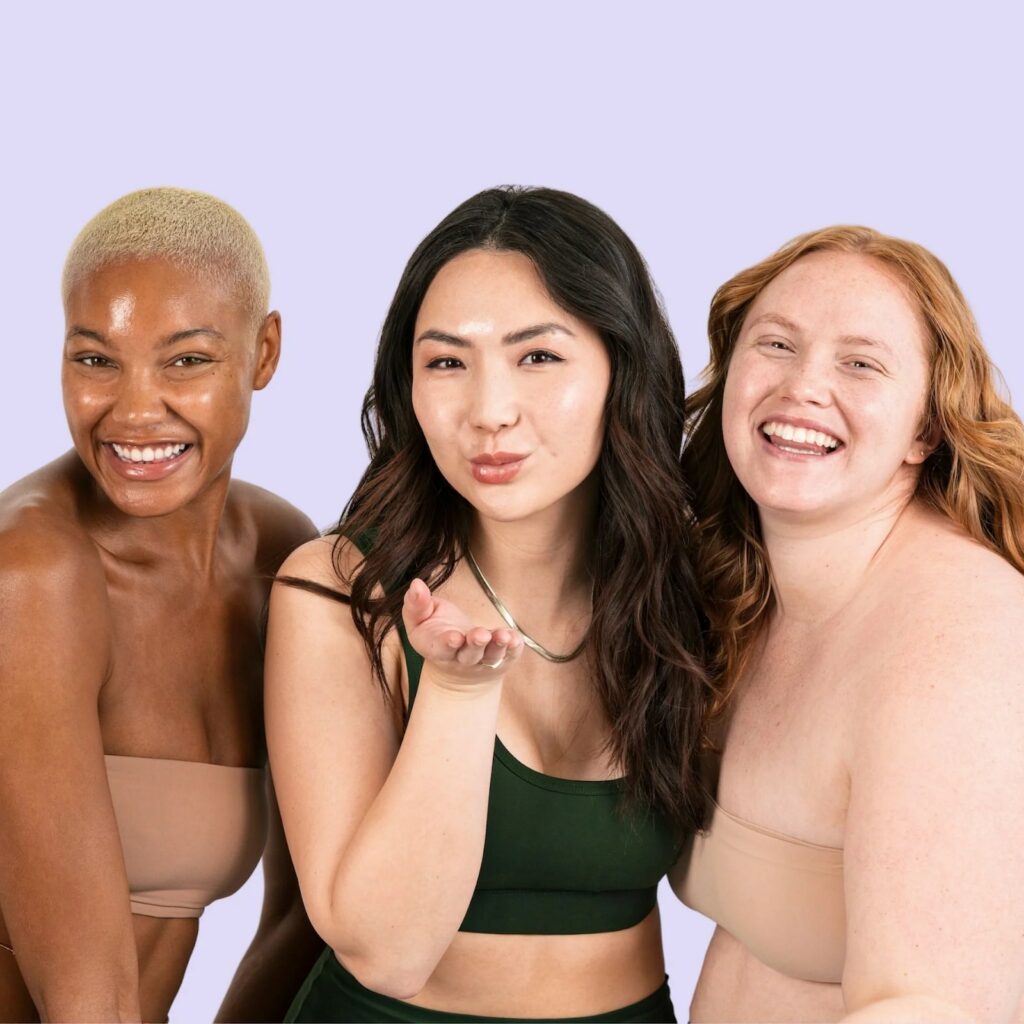

You know who else wants to be included in the 2024 beauty landscape? Men.
As cultural attitudes evolve, the boys (gay, straight, metrosexual, and everything in between) are feeling more empowered to partake in beauty and self-care.
Brands like Dolce and Gabbana are steering campaigns to ensure they know they’re welcome in this space.
Michele Morrone for Dolce&Gabbana Beauty
Some ways beauty brands can make men feel more included are:
- Shift to gender-neutral imagery and language
- Start a video content series on men’s beauty
- Develop and promote a line exclusively for the fellas
- Partner with male-oriented businesses (like barber shops or gyms)
But in this day and age, it’s not just about feeling seen. Consumers want to feel heard, too.
Advocating for what’s right
Today, inclusivity means your audience’s fight is your fight; their cries for justice are your calls for what’s right.
“It’s very much becoming a climate of ‘if you stand for nothing, you’ll fall for everything.’ While you don’t have to get on a soapbox, you should showcase your brand values and partner with organizations aligned with your brand mission,” explains Christina.
She says it’s not about taking a hard-hitting political stance but humanizing your brand by being forthright about your ethics and values. If it aligns with what your audience stands for, they’ll feel represented.
Take Nimi Skincare, for example.
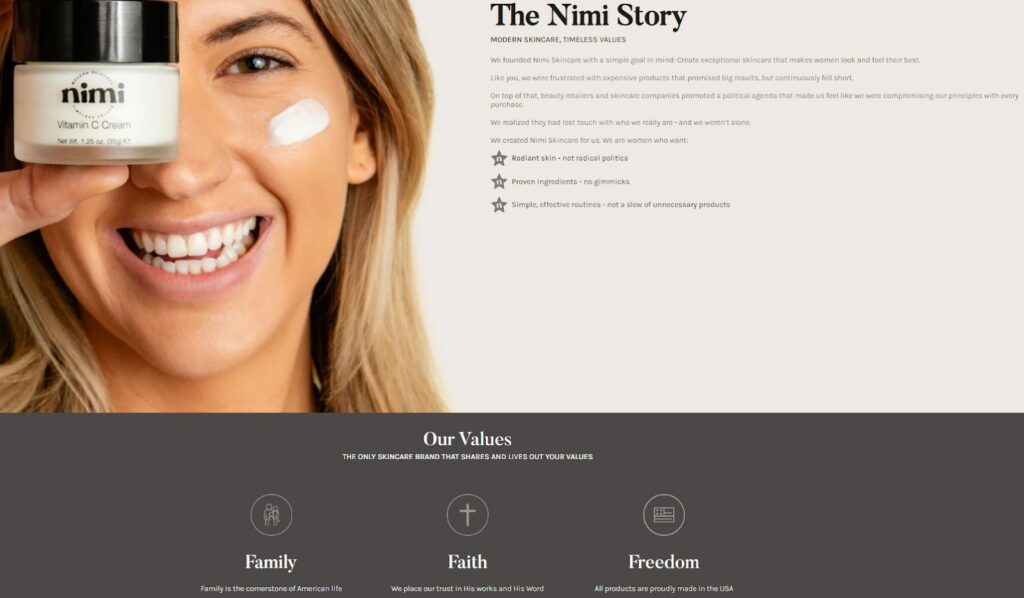
While many brands shy away from right-leaning political stances, Nimi has made it a core aspect of its identity. Gutsy? Controversial? Maybe, but they’re connecting with a very specific audience. But is it too bold of a stance?
Christina cautions that when it comes to taking a stand, it’s a delicate balancing act.
“Taking too firm a stance can rule out a large demographic. Ultimately, it comes down to each brand’s goals and how comfortable they are with engaging in political discourse.”
That said, there is one movement every brand should be on board with in 2024…
9. Stay sustainable, stay successful
Harper’s Bazaar thoughtfully brings attention to Avon CMO Neirynck’s stance on what will bring beauty brands success: the merging of commerce with purpose.
‘Vegan,’ ‘cruelty-free,’ and ‘pure’ ingredients are just a few of the buzzwords we’re seeing. But they’re more than just buzzwords; they’re now purchase qualifiers for your customers.
But are people willing to spend more on environmentally conscious products? About 56% say it’s a resounding yes for beauty products.
Now, what does this mean for you? You’ll need to do more than step up your recycling game. The upside? This presents a unique opportunity to maximize your audience’s trust and create campaigns around your ethical practices.
Take a page out of Garnier’s playbook.

They started a campaign called the #OneGreenStep initiative, encouraging audiences to share their video and help recycle plastic bottles.
Other ways beauty brands can cut down on waste?
- Multi-functional products
- Upcycled or biodegradable packaging
- Refillable products
- Go-green campaigns like Garnier’s
- Rewards for returning product-empties (to recycle)
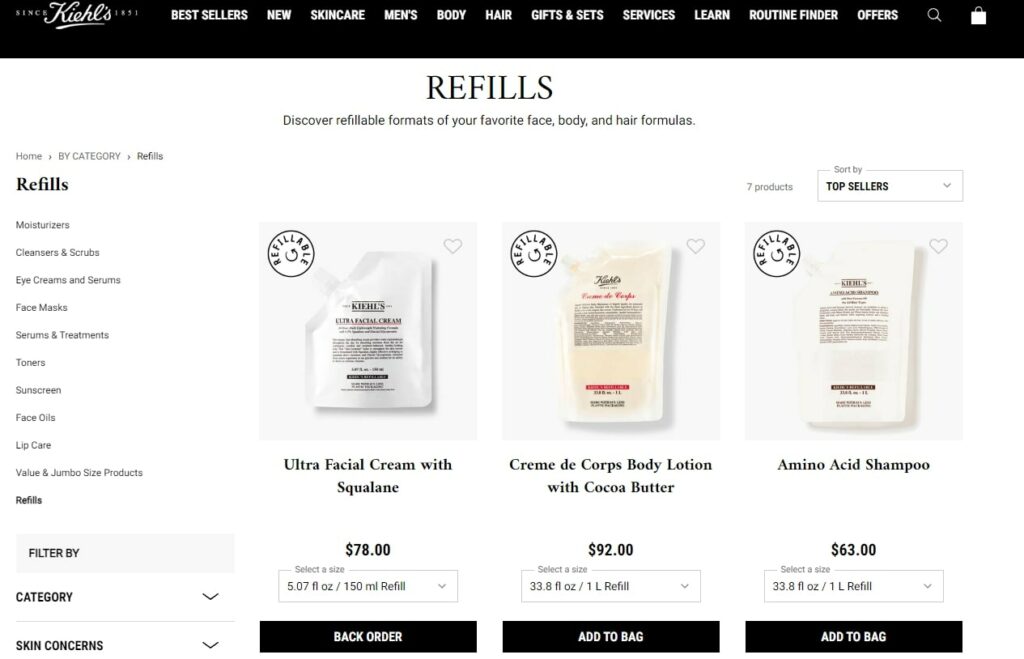
Keeping the planet clean? Love it. Maybe it’s time your formulations followed suit.
10. Self-care and beauty unite
In recent years, we’ve seen an uptick in sustainable values not just for the environment but also for our health. In 2024, that movement continues to build.
In the coming year, beauty brands must focus on pure ingredients with scientifically backed health benefits as beauty becomes one with health and wellness. Labels like “naturally formulated” or “dermatologist approved” are simply too vague come 2024.
Remember that transparency we talked about earlier? You have to PROVE why your brand is pure.
How can you do this?
- Dedicate a page to the science behind your products
- Partner with a doctor or dermatologist to vouch for your formulas
- Back up your claims with clinical trials and assurances about each ingredient’s purity and benefits
- Publish your findings for peer review to offer proof and credibility
Here’s how True Botanicals published their clinical trials to do precisely that:
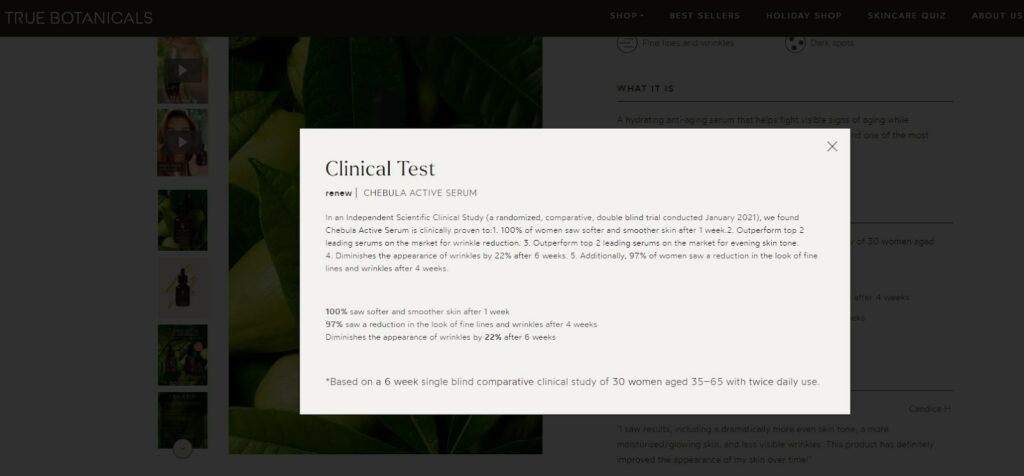
But pure formulas? That’s just the start. There’s a growing desire for the mind-body connection to be integrated into beauty products, too. We’re seeing more “self-care skincare” marketing and makeup with mental wellness themes.
One brand that’s linking mental health and beauty? Rare Beauty (which is our pick for a celeb beauty brand strategy worth emulating). Selena Gomez’s beauty brand intertwines mental health advocacy through every offering and piece of content.
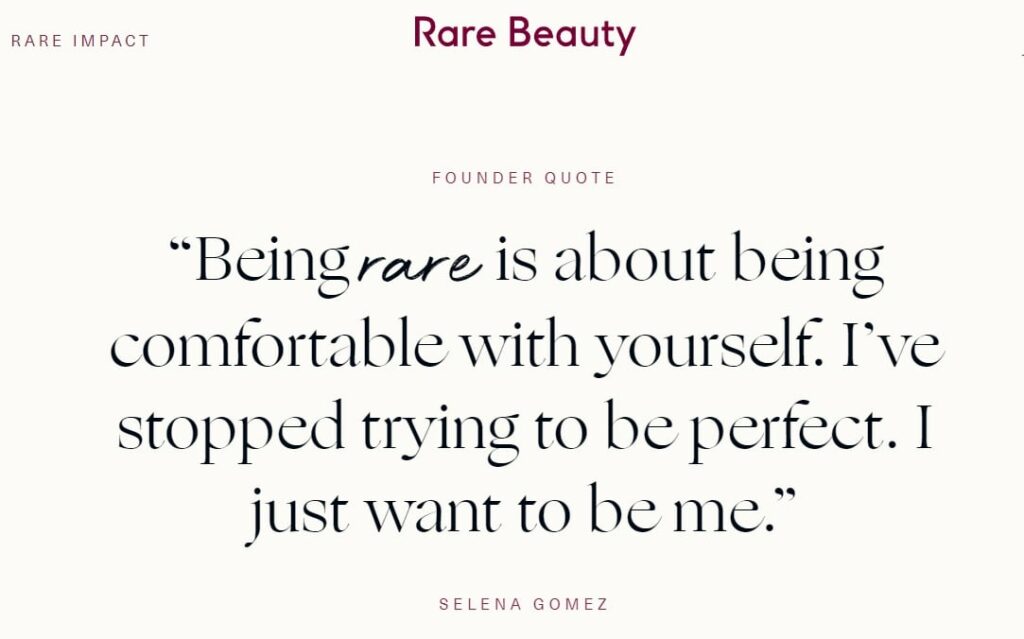
And with a global revenue of over $250 million? We’d call it a pretty strategic move, too.
Time to address the economic elephant in the room…
11. Beauty brands go recession-friendly
The question on every beauty business owner’s mind: Will sales dip due to a recession?
Unfortunately, our powers are limited to kickass content writing—not predicting the future.
According to Christina, the “silent recession” is only growing louder—and your customers? They’re getting much more discerning about what they invest their hard-earned money into.
“In 2023, we were all prioritizing self-care after recovering from post-pandemic malaise. But now, as we head into an uncertain economic landscape, I see beauty brands tightening their marketing budgets, which means sales are most likely dipping.”
So, what does that mean for the beauty industry? Brands nimble to the challenges audiences face shouldn’t worry too much.
As for the ones lagging behind…
“Brands need to be strategic about investing in authentic marketing that humanizes their brand, prioritizes storytelling, and gets on the ground with their customers, rather than market to them. Include them in your campaigns to make your brand more relatable; think Dove’s Real Beauty campaigns or Daniel Alain’s Hair Stories.”
Her advice? Now’s the time to jump onto the incentives bandwagon. Motivate your customers with:
- Discounts
- Bundles
- Freebies
- Loyalty programs
This fosters loyalty and makes shopping for your brand more manageable during economic turbulence.
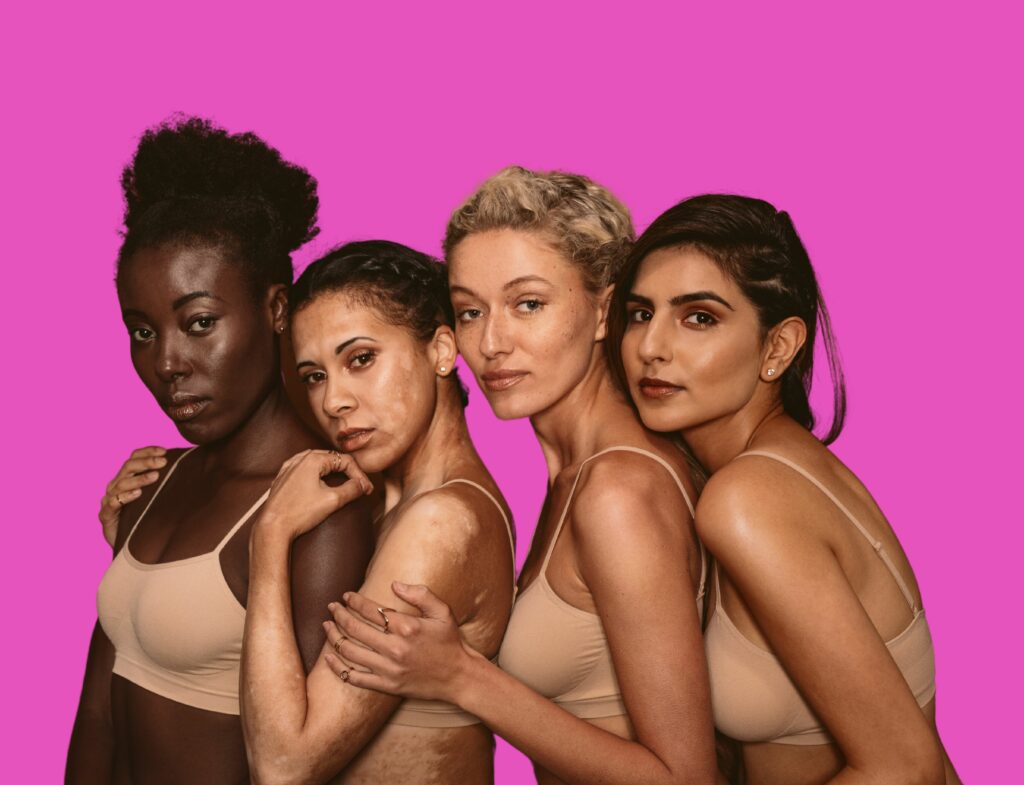
Final Thoughts
As we welcome a new era of beauty industry trends, one thing is sure: We’re shifting to more authenticity in every respect—from pure, mind-body ingredients to relatable AF brand representation. Oh, and a lil’ sprinkle of AI-powered innovation.
The takeaway? The most innovative, audience-informed brands with authentic, valuable content are the ones that will survive THRIVE in this economic storm. And if you’re slacking on your campaigns, you’re slacking on your audience.
They deserve to be heard—and so do you.
Want some support to execute these initiatives with strategic finesse? Maybe it’s time to partner with a seasoned content writing agency committed to communicating your brand values and messaging in the most authentic way possible.
We’ve got a glowing team of beauty content writers ready to make you and your audience feel seen and heard. A blip on their radar? More like impossible to ignore.
Let’s make your brand the next big thing in beauty.
This post was originally published on 2/24/23 and has been updated with new research.

02/24/2023
Chrissy is a contributing writer at Lyon Content based in Toronto. She loves writing and editing tech, marketing, and lifestyle content. But her favorite part of writing is helping businesses express themselves. When she isn't writing, she's traveling as much as possible and eating a lot of cheese.

